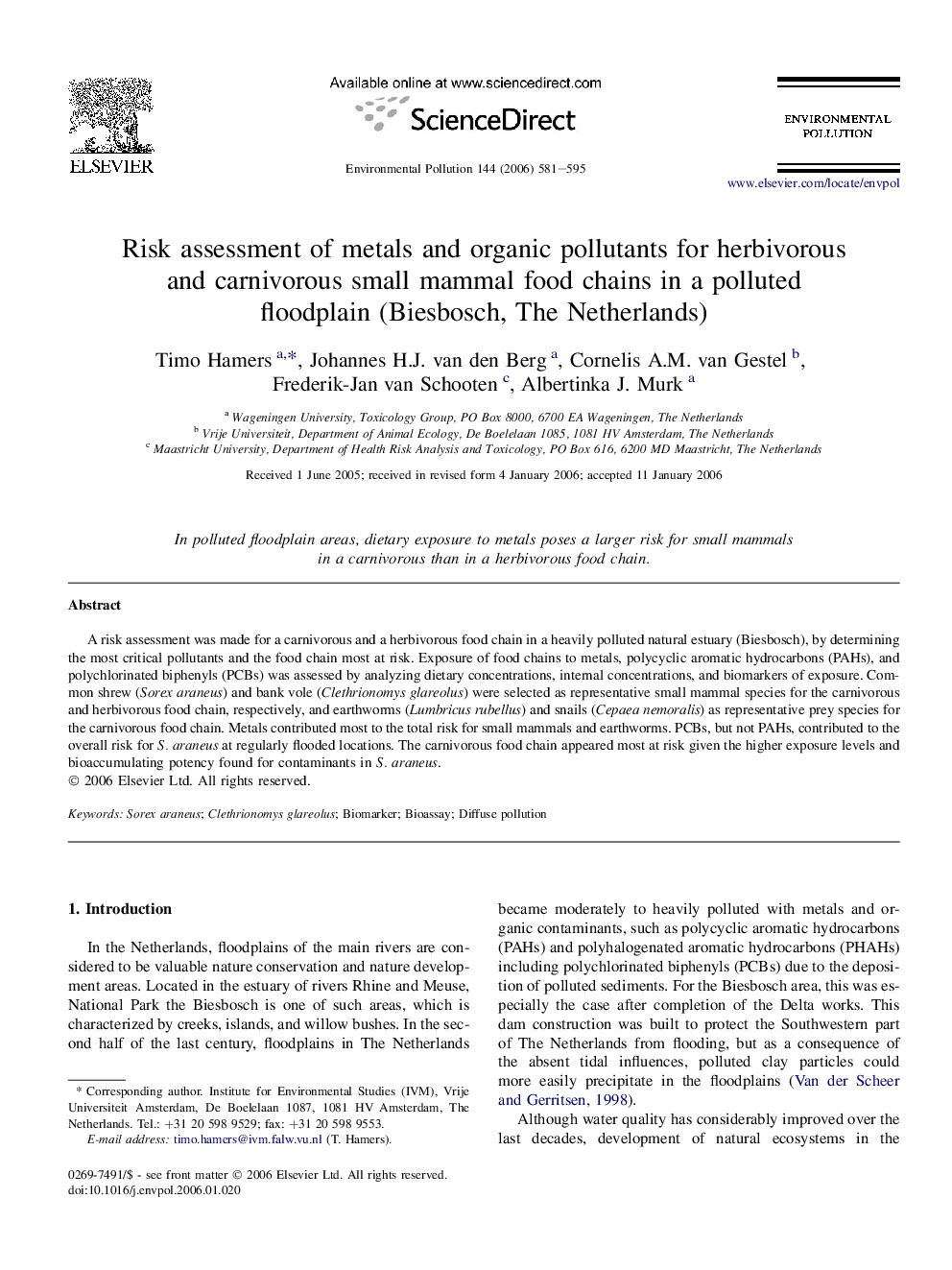| Article ID | Journal | Published Year | Pages | File Type |
|---|---|---|---|---|
| 4427782 | Environmental Pollution | 2006 | 15 Pages |
A risk assessment was made for a carnivorous and a herbivorous food chain in a heavily polluted natural estuary (Biesbosch), by determining the most critical pollutants and the food chain most at risk. Exposure of food chains to metals, polycyclic aromatic hydrocarbons (PAHs), and polychlorinated biphenyls (PCBs) was assessed by analyzing dietary concentrations, internal concentrations, and biomarkers of exposure. Common shrew (Sorex araneus) and bank vole (Clethrionomys glareolus) were selected as representative small mammal species for the carnivorous and herbivorous food chain, respectively, and earthworms (Lumbricus rubellus) and snails (Cepaea nemoralis) as representative prey species for the carnivorous food chain. Metals contributed most to the total risk for small mammals and earthworms. PCBs, but not PAHs, contributed to the overall risk for S. araneus at regularly flooded locations. The carnivorous food chain appeared most at risk given the higher exposure levels and bioaccumulating potency found for contaminants in S. araneus.
